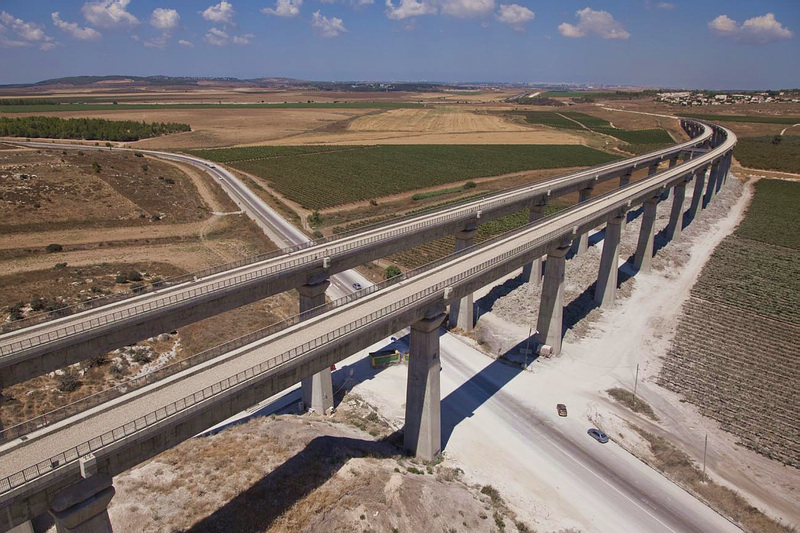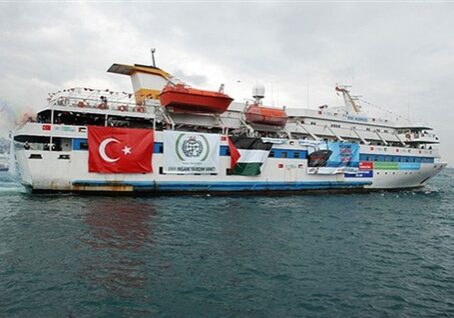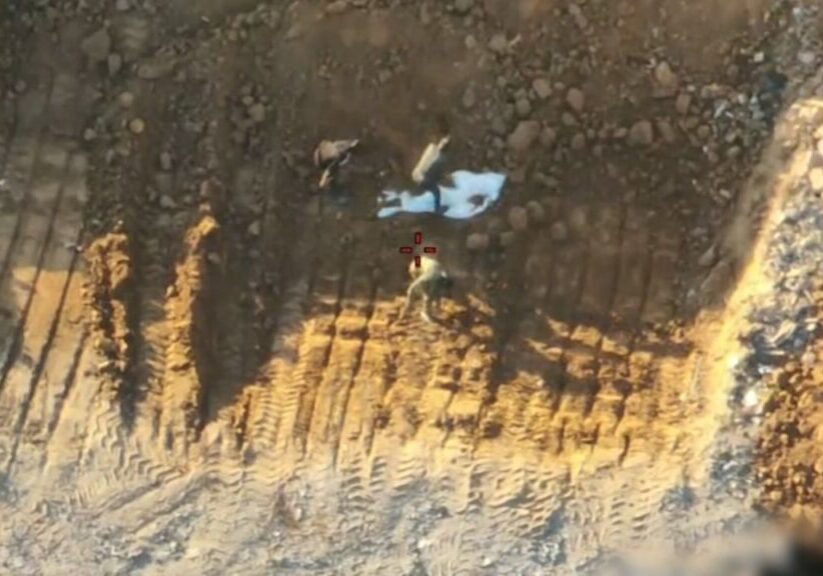Australia/Israel Review
Rabin’s Transport Revolution comes of age
Sep 5, 2016 | Amotz Asa-El

Amotz Asa-El
The journey from Tel Aviv to Jerusalem, traversing one of the most famous and majestic paths to a capital city anywhere in the world, is about to change beyond recognition.
Meandering, climbing, and gradually shedding the coastal plain’s mundanity and humidity for the Judean Mountains’ aura of sanctity and breezes, visitors never forget their first ride to Jerusalem – the sensation of following in the footsteps of pilgrims and prophets.
Next year, however, a new railway and a renovated highway will transform the commute from Tel Aviv, and thus crown an ongoing transport revolution that is covering the Jewish state with a thicket of modern highways, spaghetti junctions, metro transit systems, and railroads.
The Tel-Aviv-Jerusalem highway crosses the Shaar Hagay mountain pass, famous for the wrecked armored vehicles that line it as monuments to the 1948 battles in which Jewish defenders defied the Arab siege of Jerusalem. As the natural path from the Mediterranean coast to Jerusalem, it has been traveled since antiquity.
Now, however, this climb’s steepest slope, known to all Israelis as “The Kastel” – named for the Crusader fortress on the summit – is about to be undercut by a tunnel. Meanwhile, a notoriously sharp curve downhill from there is being replaced by a vast, multi-lane ramp.
Commuters coming from Tel Aviv will reach the tunnel after passing under a series of interchanges and bridges, including an ecological pass designed so that the wildlife in the surrounding forests can safely cross.
The project’s completion date is just over a year away, but the new ramp has opened already in one direction, as has a newly added lane near the mountain pass – all of which already gives drivers a feel for the much quicker and more convenient drive that awaits them soon. Today’s 50-minute drive will be cut to less than 40, the two-lane segments will double, and the curves will either be tempered or vanish altogether.
Yet all these changes will be dwarfed in the face of the new railway to Jerusalem.
Having first climbed up from Jaffa in 1892, the original railroad to Jerusalem runs south of the highway to Tel Aviv. A scenic feat of engineering, it respects the topography of the Judean Mountains, entering them from Beit Shemesh, the biblical Philistines’ westernmost outpost, before climbing patiently along the slopes of the Sorek Creek, where the Bible says Samson once lived in a cave.
The new train will have no such patience.
Rather than fuss with topography, its engineers decided to relocate the railway on the highway’s northern flank, which is closer to Tel Aviv, and then lead it through a system of tunnels and bridges in almost a straight line from the Shaar Hagay pass to the string bridge designed by architect Santiago Calatrava which dominates Jerusalem’s gateway.
The result is a continuum of engineering landmarks – from Israel’s longest bridge through its longest tunnel to its tallest bridge and deepest tunnel. Finally, the ride from Tel Aviv will end in one of the world’s deepest train stations, 80 metres underground – which is designed to also do double duty as a vast bomb shelter, able to accomodate thousands.
All this may not impress the well-travelled, except that this rail line, unlike all other mountainous lines, will be a fast train – its purpose is not to entertain tourists, but to carry commuters, 70,000 of them per day, with trains leaving every 15 minutes.
While Jerusalem is hardly 800 metres above sea level, the train must climb this height after beginning at sea level itself, and within a mere 60 km. To temper the steepness of the climb, the engineers inserted a bridge east of Ben-Gurion Airport, so the train’s incline will start while it is still in the cotton fields at the Judean foothills.
When completed, also by the end of next year, the new railway’s ride will cut the current duration of the trip from 90 to 30 minutes. It will thus become the easiest way to travel not only between Israel’s commercial and political capitals, but also to Ben-Gurion Airport, where the ride will make a 90-second pause – its only intermediate stop.
The new railway will therefore take many cars off the Jerusalem-Tel Aviv highway even as the latter becomes broader, smoother and faster.
The two projects, which cost a combined NIS 7.8 billion (A$2.7 billion), will collectively form the crowning glory to a transportation revolution that began in 1992, when then-Prime Minister Yitzhak Rabin declared it a national goal.
Rabin’s revolution began with vast increases in budgets for highways and interchanges, and culminated in commitments to two mega-projects whose completion he did not live to see: The Trans-Israel Highway and the expanded Ben-Gurion Airport.
The Trans-Israel Highway, Rabin promised, would link Israel’s north and south while siphoning traffic away from the congested coastal plain. Inaugurated seven years after his murder, and since then incrementally extended, the 160-km highway is now named after Rabin and is Israel’s longest thruway and its first toll road.
The Ben-Gurion Airport, meanwhile, has been rebuilt, replacing an austere and minuscule terminal with one of the world’s most handsome and most passenger-friendly airports, with annual traffic – constrained during Rabin’s lifetime by a 5 million-passenger annual capacity – this year exceeding 17 million.
Both projects were seminal not only physically but also politically – proving to politicians that they could successfully deliver the transportation metamorphosis the Jewish State’s infrastructure cried out for.
Consequently, a succession of nine governments have continued and intensified the overhaul Rabin began, with new thruways now lacing the coastal plain, crisscrossing the Galilee, and one also running through Mount Carmel, and under the port city of Haifa.
Railways, at the same time, were doubled along the coast and down to Beersheba in the Negev Desert, while up north a line running from the Jordan River through the Jezreel Valley to the Mediterranean has just been completed and will begin operations later this year.
The railway to Jerusalem will overshadow all these, both in its utility and modernity, but two other projects which look destined to eclipse it are already on their way: one on the drawing board, the other on the ground.
On the drawing board is a fast train from Tel Aviv to Eilat, Israel’s southernmost tip, on the Red Sea. On the ground, and also under it, is work on an extensive metro system for greater Tel Aviv.
The southern railway’s northern segment already exists, though the 140-km stretch from Tel Aviv through to Dimona would need to be doubled and electrified to be incorporated into the scheme. The outstanding 240 km would need to be built from scratch, including 63 bridges and five tunnels. Ultimately, it should reduce today’s four hour Tel Aviv-Eilat car trip to a two-hour train ride.
However, this scheme’s overall cost might reach US$10 billion, more than any single project ever undertaken in Israel. That price tag is why the train to Eilat, though approved in principle, has yet to be financed and scheduled.
The Tel Aviv metro, by contrast, is now under construction, 43 years after the 1973 Yom Kippur War derailed a resolution to build taken by Golda Meir’s government.
The plan’s eight lines will ultimately link 17 cities in the Tel Aviv area with 341 stations featuring a mixture of light railways, subways, and rapid buses.
The first and most central of these lines is the one being dug today between downtown Tel Aviv and nearby Ramat Gan. Comprising 34 stations, ten of them underground, it is scheduled to begin running in five years. Work on the system’s second line has just been approved and is expected to begin next year, and a third line’s construction will start the following year.
In Jerusalem, meanwhile, a light railway line that was launched in 2011 now carries 150,000 passengers daily and is being extended in three directions.
Israeli transport, in short, is in the process of closing the gap with the West and supplying something akin to world’s best practice, as the population squeezed into Israel’s small area continues to grow steadily.
In fact, the commotion has reached such a scale that it caught the attention of Chinese contractors and strategists.
The Asian superpower’s contractors have participated in digging the Carmel tunnels in Haifa and in building a railway between Acre and the Galilean town of Karmiel. Meanwhile Shanghai-based SIPG won a tender to operate a new harbor in Haifa, and another firm, China Harbor has been contracted to build a new port in Ashdod, south of Tel Aviv.
China’s strategists, meanwhile, are expressing much interest in the railway to Eilat, which fits well into their quest to smooth the voyage of Chinese goods to Europe by creating storage centres along the prospective railway between the ports of Eilat and Ashdod. The inter-sea railway will also provide them with an emergency alternative to the Suez Canal.
Beijing is eager to build the Eilat railway, and the Netanyahu Government is keen to outsource this project to China, and has already drafted a blueprint for a joint venture.
However, in addition to the financing challenge, the plan also faces opposition from environmentalist groups, which fear it will damage the route’s unique desert scenery.
Indeed, it is undeniable that the massive development drive Rabin unleashed has sometimes come at the expense of nature and romance.
For instance, Jerusalem-Tel Aviv railway commuters will not see the iconic armoured vehicles left as monuments at the Judean Mountains’ foothills, because the train will enter the mountains through a tunnel north of that location.
Moreover, unlike motorists, train passengers en route to Jerusalem will lose the experience of approaching the city by ascending gradually through the Judean Mountains’ pristine slopes and forests. Instead, they will cross the mountains underground before suddenly emerging at Jerusalem’s threshold atop a 90m-tall bridge.
The planned arrival in Eilat will not be as dramatic, but further north the terrain requires a tunneled climb from the Arava Valley south of the Dead Sea to the Negev Plateau, an ascent from 160m. below sea level to 460m. above sea level, challenging both engineers and environmentalists.
Then again, the Jerusalem fast train climbs even more steeply while environmentalist concerns were often successfully addressed – for instance a massive pillion shouldering a bridge between the railway’s tunnels was re-positioned to protect the greenery and wildlife surrounding a local creek.
It follows that the Eilat train can and in all likelihood will ultimately be built as well. It will be the terminus of an Israeli transport revolution whose locomotive left the station a quarter of a century ago.
Tags: Israel






